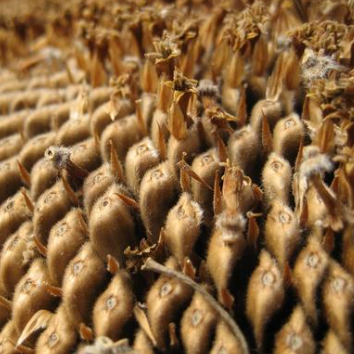 You don’t need a science degree to save your own seeds and start a personal seed library. As Ken explains, all you need to do is to be curious, patient, experimental, a pollinator, and to start with good seed, connect and share. Take a look at his article - Seeds and Salsa - on why and how you should save your seeds, then pick a few great beginner seed-saving varieties from the list below to add to your library this season.
You don’t need a science degree to save your own seeds and start a personal seed library. As Ken explains, all you need to do is to be curious, patient, experimental, a pollinator, and to start with good seed, connect and share. Take a look at his article - Seeds and Salsa - on why and how you should save your seeds, then pick a few great beginner seed-saving varieties from the list below to add to your library this season.
Peas and Beans: Peas don’t generally cross-pollinate with one another, so plant different varieties close together freely. Most beans don’t cross readily, but to stay safe, leave some room between different bean varieties if you plan on saving seed. To save seeds, let the pods dry on the plant completely, until they rattle when shaken. Then, harvest the pods, open them and dry the seeds for a few more days in a well-ventilated and dry place.
Tomatoes: Save the seeds and make salsa with the rest! Click here for detailed instructions.
Peppers follow a similar process to tomatoes. Take a look here for detailed instruction. And, mind the heat! Remember to wear gloves when processing hot peppers, so they don't burn your hands.
Lettuces doesn’t readily cross-pollinate, so feel free to plant different varieties nearby. To prevent disease and encourage strong seeds, thin so the plants are not touching. Let them bolt and once the flowers wilt and the seeds form, snip the full stalks below the seed heads and shake into a bucket. Separate the chaff from the seeds as much you can (a household fan set to a low speed is helpful), then spread in a thin layer to dry for a few days in a well ventilated and dry place.
Winter and Summer Squash and Pumpkins do cross-pollinate, but only within their own species, of which there are four: Cucurbita Pepo, Cucurbita Moschata, Cucurbita Maxima and Cucurbita Mixta. As long as you only grow one cucurbit from each species, cross-pollination won’t be an issue. To save seeds, let the fruit mature past prime eating stage to give the seeds a chance to grow more. Some ways to know it’s ready for harvest is if the stem is fully dry and brown, or if the part of the fruit in contact with the ground becomes soft (for summer squash, wait till the skin turns hard similar to winter squash). Scoop out the seeds and leave them in a bucket of water for two to three days so the seeds to separate from the flesh. Then, rinse them apart and dry in a single layer in front of a fan to get rid of all moisture.
Cucumber seeds follow a similar process to squash. Harvest them once they change to an off-white or yellowish color and have a soft spot where the fruit comes in contact with the ground. Cut lengthwise, scoop the seeds, leave in a bucket of water for two to three days, rinse, and dry.
Flowers are (mostly) easy. Wait till the bloom is fully dry and withered and seeds are formed. Then, harvest the whole flower head and dry in a single layer in a well ventilated and dry place for a few days. Once dry, separate the flower head and dry petals from the seed itself by gently rubbing it between your palms, or by using a household fan on a low speed to blow the chaff away from the seed.





